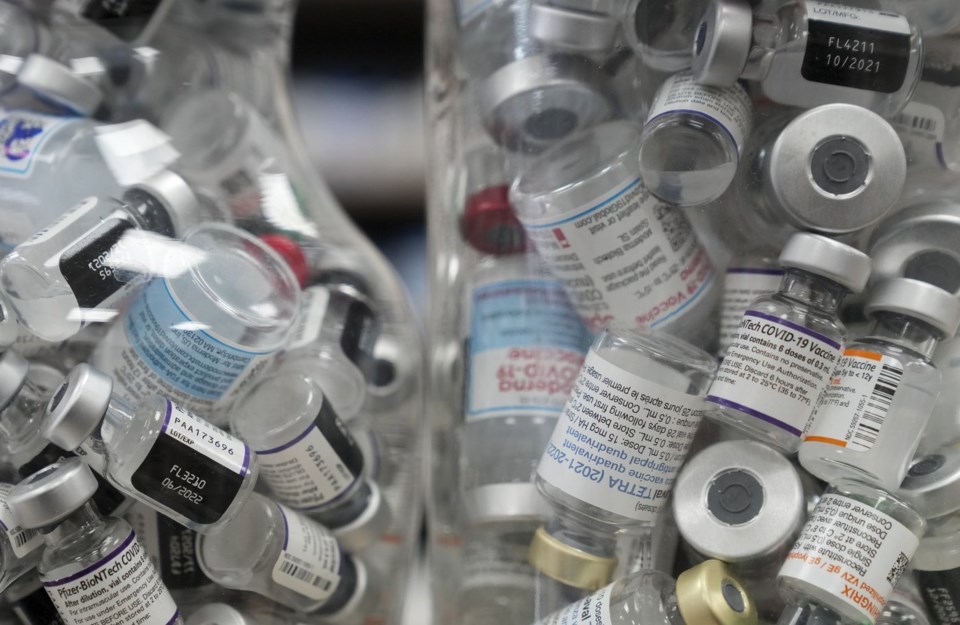The Public Health Agency of Canada says it asked provinces to get rid of existing COVID-19 vaccines to avoid confusion with new formulations that will have the same drug identification number.
“We can't have them both in the same pharmacy, the same vaccine clinic, at the same time, because you won’t have any way to distinguish what is what,” says Dr. Donald Sheppard, PHAC’s vice-president of infectious diseases and vaccination programs branch.
Health Canada says it is reviewing updated COVID-19 vaccines that essentially modify the current shot to target a more recent strain of the virus for an expected fall rollout.
That's opposed to waiting for an entirely new formulation that would carry a different number but take longer to develop from scratch and slow down the approval process.
Sheppard is explaining what’s behind the federal agency’s plan after some pharmacists and doctors said removing current COVID-19 vaccines before new ones are approved could leave gaps in vaccine access spanning weeks.
This is the practice with other regularly updated vaccines, including those for influenza, according to Sheppard.
Canada has entered a similarly routine phase for COVID-19 vaccinations, Sheppard says, noting the past several shots have been updated versions of previous formulations but those rollouts didn't direct provinces to dump old stock.
There were still concerns last year that shifting gears on the rollout process could be considered too soon, says Sheppard.
He says now it’s time to move forward with a more “routine phase” that we can “sustain long-term.”
“This year, as is every year with the flu vaccine, we need to make sure that before the new formulations roll out into the clinics, the old formulations have all been removed," Sheppard says.
The federal agency released a directive to provinces and territories last month to dispose of vaccine stocks that target the previously-dominant XBB.1.5 variant, before formulations targeting JN.1 or KP.2 are approved and distributed.
Ontario, Alberta, Saskatchewan and Quebec said they were following this directive but British Columbia and Manitoba said residents who want a dose of the remaining supply will still have access to it.
Some health-care providers, including the Canadian Pharmacists Association, raised concerns last week that this “mismatched guidance” on vaccines could lead to confusion for patients.
Sheppard says his guidance to the public is as follows: “Whether you get your vaccine this Tuesday or next Tuesday or the following Tuesday, the difference in your protection is not likely to be very substantial. However, the difference in getting a new formulation that is a better match may actually be substantial.”
This report by The Canadian Press was first published Sept. 10, 2024.
Canadian Press health coverage receives support through a partnership with the Canadian Medical Association. CP is solely responsible for this content.
Hannah Alberga, The Canadian Press


